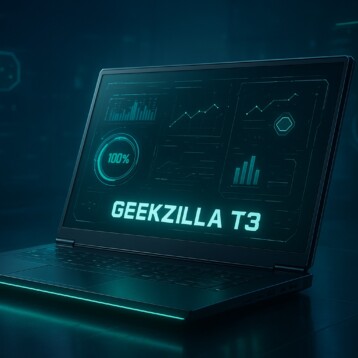The new research study provides an application for the theoretical “Schrödinger’s Cat:, an animal that is simultaneously dead and alive. This thought experiment, often described as a paradox, was devised by the Austrian physicist Erwin Schrödinger in 1935. It illustrates one of the basic elements in quantum mechanics: An object’s state is determined by random events, and until determination the two states co-exist. In this case, the issue is the remarkable ability of an electron to exist in two places at once.
Now, for the first time, the electron’s state has been controlled in the most common electronic material: Silicon. The researchers conducting the study – published in Nature – are from several institutions in the United Kingdom and the Netherlands: University College London (UCL), the University of Surrey, Heriot-Watt University in Edinburgh, and the FOM Institute for Plasma Physics near Utrecht.
According to the research paper, the cheap, easy-to-manufacture silicon was the basis for the creation of a physical equivalent to “Schrödinger’s Cat”. Thanks to this development, quantum states can be represented, thus allowing quantum calculations to be performed that improve computability greatly. “Quantum computers can solve some problems much more efficiently than conventional computers – and they will be particularly useful for security because they can quickly crack existing codes and create un-crackable codes,” explains Professor Ben Murdin, Photonics Group Leader at the University of Surrey.
Most quantum scientists agree that next-generation devices must make use of superpositions to do quantum computations. Quantum superposition refers to the quantum mechanical property which states that all particles exist in not one state but all possible states at once. Due to this property, to completely describe a particle one must include a description of every possible state and the probability of the particle being in that state.
When asked to describe their experiment, Murdin said: “We used a far-infrared, very short, high intensity pulse from the Dutch FELIX laser to put an electron orbiting within silicon into two states at once – a so-called quantum superposition state. We then demonstrated that the superposition state could be controlled so that the electrons emit a burst of light at a well-defined time after the superposition was created. The burst of light is called a photon echo; and its observation proved we have full control over the quantum state of the atoms.”
The new work shows that employing lasers in quantum engineering helps create very sophisticated instruments, called cold atom traps. These “traps” can be implemented in the same type of silicon chip used when making the much more common transistor.
Murdin emphasizes the importance of lasers for the study, claiming they “Have had an ever increasing impact on technology, especially for the transmission of processed information between computers, and this development illustrates their potential power for processing information inside the computer itself.”
Professor Gabriel Aeppli, Director of the London Centre for Nanotechnology, added that the findings are highly significant to academia and business alike. “Next to iron and ice, silicon is the most important inorganic crystalline solid because of our tremendous ability to control electrical conduction via chemical and electrical means,” he said. “Our work adds control of quantum superpositions to the silicon toolbox.”
“This is a real breakthrough for modern electronics and has huge potential for the future; the combination of advanced lasers and the development of a silicon based ‘quantum computer’ may be only just over the horizon,” concludes Professor Murdin.
TFOT has also covered the development of new quantum lasers that emit more light than Heat, made by researchers from Northwestern University, and the lengthening of quantum bit memory, achieved by using lasers. Other related TFOT stories include an elaborative article about quantum cat “whiskers”, related to Schrödinger’s cat, and the controlling of quantum states, demonstrated by an international team of researchers who placed a single electron in two places at once.
For more information about the UCL’s involvement in the quantum computer research, see the university’s website.










